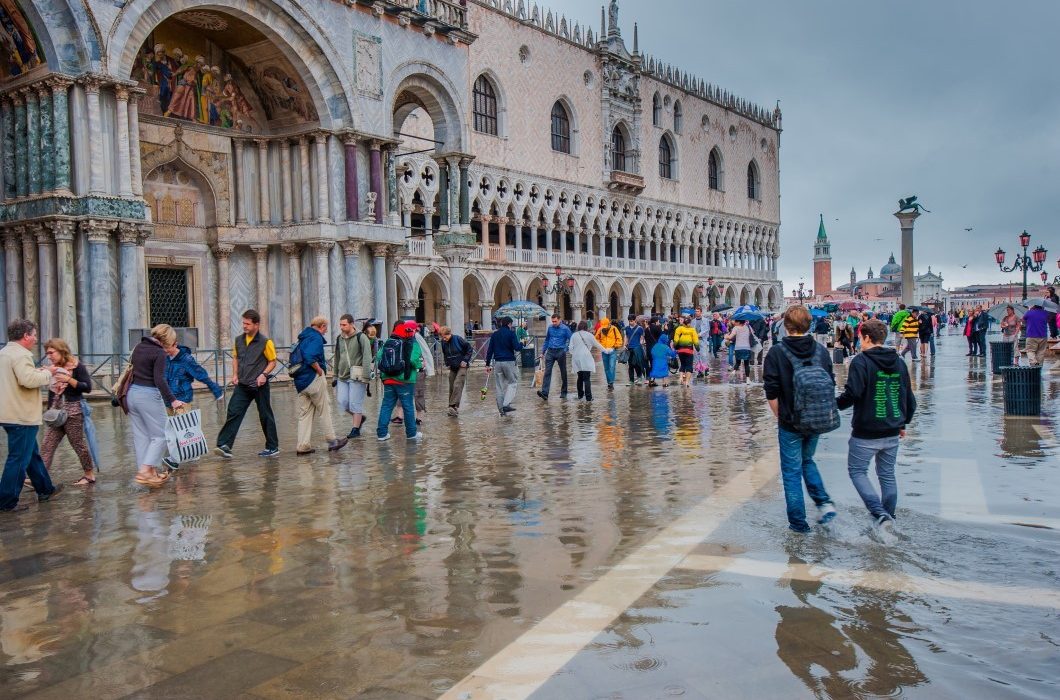
You might also like:
Climate change is becoming one of the most significant risks for World Heritage Sites, according to the United Nations Educational, Scientific and Cultural Organization (UNESCO) in its report entitled “World Heritage and Tourism in a Changing Climate”.
The study examines 31 World Heritage Sites from 29 countries which are vulnerable to phenomena such as rising temperatures, melting glaciers, rising sea levels, extreme weather events, or droughts.
The famous Easter Island’s moais, the canals of Venice, or the monumental Stonehenge complex are some of the World Heritage Sites that could be lost in the coming years if there are no “urgent and clear” actions to prevent it.
Venice (Italy)
The “city of canals” has been threatened by rising sea levels for decades. The phenomenon known as ‘acqua alta’ – periodic increments of the tide – coupled with mass tourism, are sinking more and more the Venetian surface and accelerating the deterioration of the buildings’ structures.
The water level in Venice has increased about 30 centimeters since the end of the 19th century. If it continues to increase at the current rate, the terrain could sink 80 millimeters above sea level over the next 20 years, according to a report by the Institute of Oceanography at the University of San Diego.
Stonehenge (UK)
Climate change could affect the environmental conditions where the most famous Neolithic monument in the United Kingdom is located. The increasing temperatures in winter attract mammals like moles or rabbits which are capable to destabilize the structures of the Dolmens.
The UNESCO points out that this increase in the temperature is already perceived in the British Isles, where winters are “becoming drier and warmer. “Rising sea levels and severe storms may also affect the Neolithic monument of Orkney Islands, Scotland.

Easter Island (Chile)
The giant statues known as moais may no longer be the hallmark of the Rapa Nui National Park, the indigenous name of Easter Island, and a World Heritage Site, since some of these sculptures are at risk of being destroyed by coastal erosion and flooding.
UNESCO warns that the impact of climate change is already registered in four of the most important places for tourism on the island: Tongariki, Hanga Roa, Tahai and Anakena, which are “seriously threatened” by the waves.

Galapagos Islands (Ecuador)
The rapid growth of tourism, the introduction of foreign and invasive species and illegal fishing have been the main threats to biodiversity in the Galapagos Islands in recent years.
The UNESCO also suggests that the effects of climate change could affect the archipelago’s natural life by causing the El Niño climate phenomenon to increase in both frequency and intensity and thus generate serious variations in sea temperature and precipitations.

Cartagena De Indias (Colombia)
Rising sea levels and coastal flooding threaten the historic heritage site of Cartagena de Indias, a Colombian city that has the richest set of military fortresses of all Latin America.
Floods have already damaged some of the city’s monuments and the increasingly stronger storms threatens to destroy several coastal neighborhoods. In this sense, UNESCO predicts that sea levels could rise 60 centimeters by 2040.
Cape Floristic Region (South Africa)
The enormous natural richness of the Cape Floristic Region places South Africa among the most biodiverse countries in the world, but rising temperatures and reduced rainfall threaten its future.
Fires are another of the threats to the South African ecosystem. The UNESCO report indicates that fires have increased since 1990 due to droughts, resulting in the destruction of vegetation and the reduction of tree size.
The Statue of Liberty (U.S.)
In the Atlantic coast cities of the United States, sea level has increased four times more than in the rest of the country. This rising trend is the main threat that the largest icon of New York City has to face.
In October 2012, Hurricane Sandy flooded 75% of Ellis Island, where the sculpture is located, and although the base of the statue remained undamaged, there were damages to the infrastructures whose repair costs exceeded sixty billion dollars.
Source: tourism-review.com
